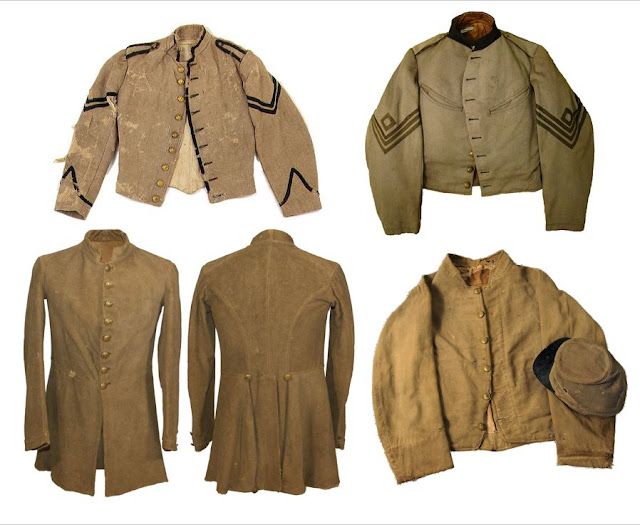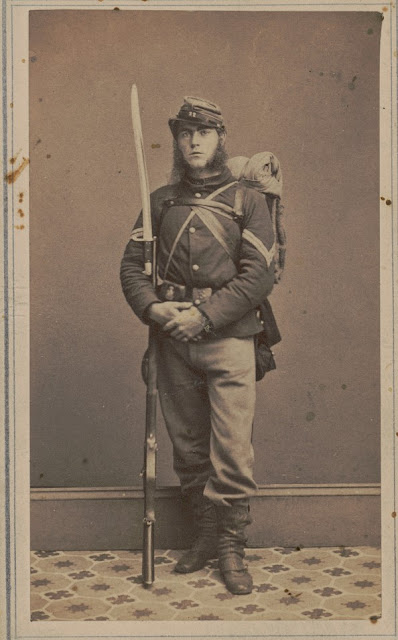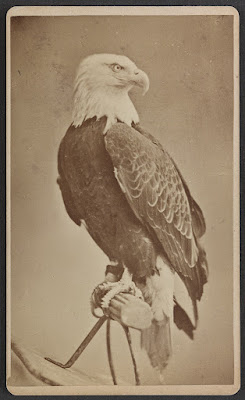With a Yell and a Charge: Captain Morton’s Artillery Charge at Brice’s Crossroads
Among the more extraordinary incidents of the Battle of Crossroads was the artillery charge by Captain John W. Morton and his battery. The 21-year-old, General Nathan Bedford Forrest’s chief of artillery, recalled the charge in a letter to his father a few days after the engagement.
“About 1 o’clock, everything,
artillery and all, was ordered to charge,” he noted. “Our line moved promptly with
a deafening shout and hail of bullets and balls which told terribly upon the
enemy which broke their lines and put them in perfect confusion and rout. I
charged with the batteries nine times. Once I had two pieces a
little in advance of the others and with them in a charge was 20 or 30 yards in
advance of our line when we drove the enemy. Just before we captured their
wagons, they made a desperate stand and with their reserves concentrated,
charged our right flank which gave way and fell back upon the two right pieces
of my battery. The enemy moved up steadily, pouring a destructive fire into our
ranks until they got within 50 yards of our two pieces. We changed projectiles,
double charged the guns with canister, poured two volleys into their ranks and
this checked them. Three more volleys with the assistance of our lines formed
on us and with a yell and a charge we drove them from the field.”
Captain Morton’s letter to his father in Atlanta, Georgia was shared with the editors of the Southern Confederacy newspaper who published it in its entirety in their July 5, 1864, issue.
Mississippi
June 1864
Dear father,
Kind heaven has again favored us with
a glorious victory, a brilliant victory does not express it. General Forrest
has achieved many brilliant victories but this far exceeds everything else he
has accomplished or anyone else in this war. We met the enemy at 10 o’clock on
the 10th, expecting only to skirmish with them until the train could
pass, wishing to draw them down to the prairies where we could get at them
better as our force was quite small compared to theirs. We had in the fight
four brigades: Bell’s, Kentucky, Rucker’s, and Johnson’s brigade from Roddy
with two batteries, Rice’s and mine, all numbering 4,500 men. Johnson had only
800 men. The enemy’s force was variously estimated from 8,000-17,000 but
generally believed by almost everyone at 10,000 men with 20 pieces of
artillery.
The fight raged furiously for three
hours, the enemy evincing much stubbornness. About 1 o’clock, everything,
artillery and all, was ordered to charge. Our line moved promptly with a
deafening shout and hail of bullets and balls which told terribly upon the
enemy which broke their lines and put them in perfect confusion and rout. They
made eight determined stands but the promptness and rapidity of our movements
completely baffled their expectations and drove them from the field after
fighting half or one hour. We were so rapid in our charges with artillery that
their batteries did them no good after the first fight. They attempted to take
positions but were routed before they could fire more than two or three shots.
 |
| Morton's Battery monument on the Brice's Crossroads battlefield. |
I charged with the batteries nine
times. Once I had two pieces a little in advance of the others and with them in
a charge was 20 or 30 yards in advance of our line when we drove the enemy.
Just before we captured their wagons, they made a desperate stand and with their
reserves concentrated, charged our right flank which gave way and fell back
upon the two right pieces of my battery. The enemy moved up steadily, pouring a
destructive fire into our ranks until they got within 50 yards of our two
pieces. We changed projectiles, double charged the guns with canister, poured
two volleys into their ranks and this checked them. Three more volleys with the
assistance of our lines formed on us and with a yell and a charge we drove them
from the field.
We followed them 50 miles the next
day, skirmished with them, and drove them all the night succeeding, scattering
them over the entire country. There will 100 in a squad ever arrive back at
Memphis; they are still being picked up and brought in. It is not recorded in
the history of this war or any other where the infantry marched so rapidly and
far as they did- 120 miles in 14 hours.
We captured, 2,500 prisoners, 300 wagons and ambulances
loaded with ordnance, commissary, and medical stores, 16 pieces of artillery,
13 caissons, and killed and wounded 1,500 men. A good many Negroes were
captured but have a few of them prisoners. Our loss was 800 killed and wounded.
I had one man killed and nine wounded in the artillery but only one of the
wounded would consent to go to the hospital- all told me they would remain with
their guns as long as they could ride or walk. I never saw such a determined
spirit in my life as everyone exhibited. Forrest’s cavalry can’t be whipped.
The general [Forrest] had paid the artillery some high compliments and says he never saw artillery handled better in his life and that he is indebted to for the victory. Without us, he could not have accomplished anything but would have been ruined. He says that he is particularly proud of my battery; they are the best men he has and if he had had three such batteries he could have whipped them without any other assistance. All the battery boys have immortalized themselves. None of our Nashville boys were hurt.
Source:
Letter from
Captain John Watson Morton, Morton’s Tennessee Battery, Atlanta Southern
Confederacy (Georgia), July 5, 1864, pg. 2











Comments
Post a Comment